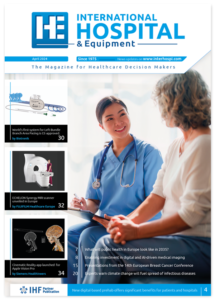UK’s MHRA signals major regulatory overhaul for rare disease therapies
The Medicines and Healthcare products Regulatory Agency has committed to a fundamental restructuring of the UK’s rare disease therapy regulatory framework, with detailed guidelines scheduled for publication in 2026. The announcement represents the most significant shift in rare disease treatment pathways undertaken by the regulator and forms part of the Government’s broader life sciences strategy.

The scale of the challenge facing rare disease patients is considerable. Approximately 3.5 million people in the UK – one in 17 individuals – live with a rare disease, yet fewer than 5% of these conditions have an approved treatment. The diagnostic journey averages 5.6 years, with 30% of affected children dying before age five. The economic burden is substantial, with delayed diagnosis and limited treatment options costing an estimated £340 million annually, alongside £4.7 billion in health-related disability costs and a £14.9 billion annual economic loss.
The regulatory difficulties stem from inherent characteristics of rare diseases. Small, geographically dispersed patient populations make participant recruitment for clinical trials difficult and expensive. Limited scientific understanding of many conditions further complicates evidence generation, whilst reduced financial incentives discourage commercial investment in therapy development.
Proposed framework introduces streamlined approval pathways
The MHRA’s approach centres on addressing these unique barriers whilst maintaining safety standards. A key proposal under consideration involves issuing a single approval covering both clinical trial applications and marketing authorisation based on compelling but limited evidence. This would be accompanied by strict safety monitoring plans incorporating real-world evidence review at predetermined intervals.
Julian Beach, MHRA Executive Director for Healthcare Quality and Access, said: “The UK has the ingredients to be a global leader in rare disease therapies, with a rich academic base, a single provider of genomics and the unique, diverse datasets of the NHS. The challenge is bringing all these elements together, which our new framework will do.”
Scientific advances drive need for regulatory adaptation
Recent developments in gene-based therapies, including CRISPR and mRNA technologies, have enabled highly individualised treatments. These platforms can be tailored to specific patient subgroups or, in the case of CRISPR, designed for single individuals based on unique genetic profiles despite others sharing the same condition. Current regulatory pathways, which require separate approvals for each therapy variation, create cost and efficiency barriers that make development of multiple targeted treatments unviable.
The paper outlines several additional considerations: enhanced evidence-sharing mechanisms within the UK and internationally to pool scarce data; potential single approvals for therapies with variable components tailored to individual characteristics; strengthened post-market surveillance protocols; and improved health system alignment domestically and globally.
Rare disease consortium supports development process
A newly established Rare Disease Consortium supports the reform development. The consortium comprises representatives from regulatory bodies including MHRA, NICE, DHSC and NHS England; patient advocacy organisations such as Genetic Alliance UK and Beacon; academic institutions including the University of Oxford and Newcastle University; and industry partners spanning pharmaceutical companies, biotechnology firms and research organisations.
Nick Meade, Chief Executive of Genetic Alliance UK, commented: “For too many families, a rare diagnosis comes without a viable cure or treatment. This programme is a vital step towards changing that. Fostering the development of treatments here in the UK will bring direct benefits for people living with rare conditions.”
The initiative aligns with the Government’s Rare Disease Action Plan and supports the long-term strategic objectives for both the NHS and the life sciences sector. Full framework details will be published in 2026.

